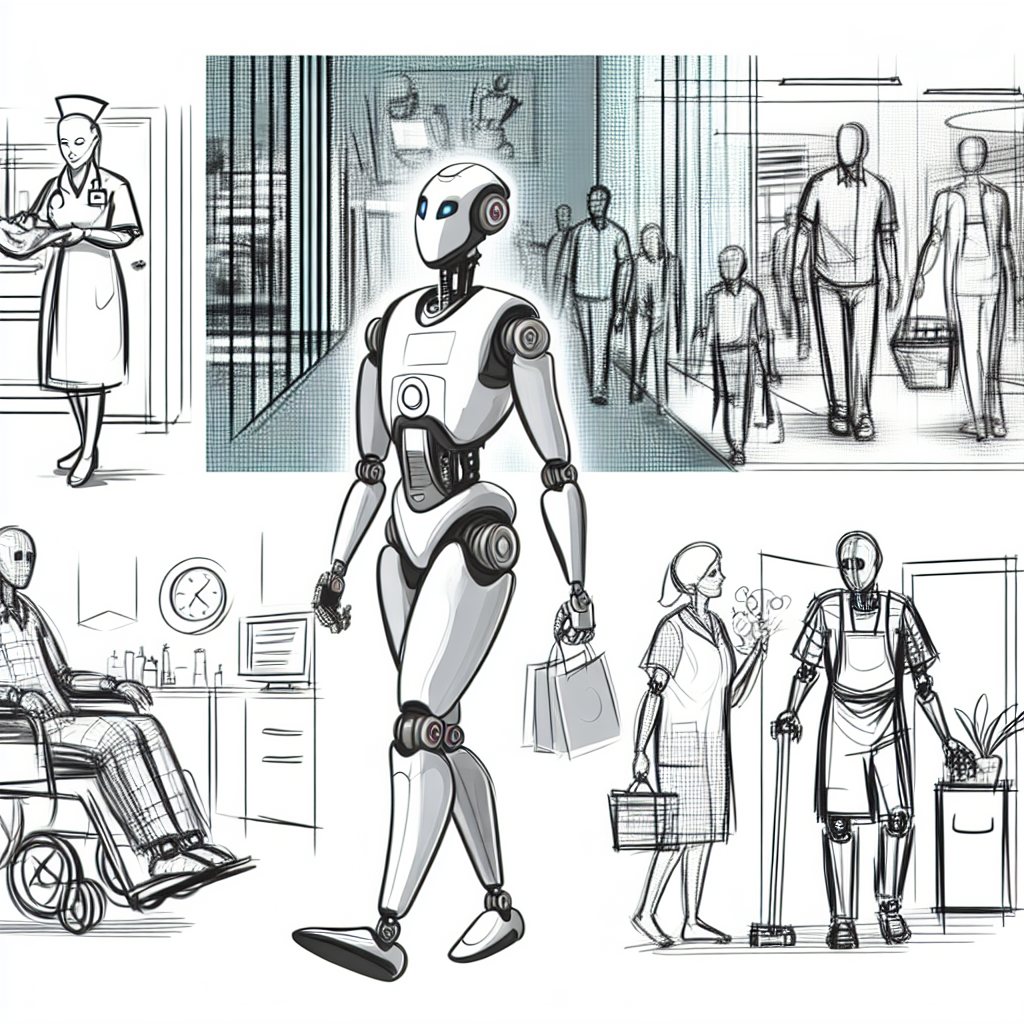# Humanoid Robots: The Next Frontier in Tech Innovation
Introduction: Overview of the Rising Interest in Humanoid Robots
/>
The field of robotics has seen exponential growth over the past few decades, evolving from simple automated machines to advanced humanoid robots capable of performing complex tasks. These robots, designed to mimic human appearance and behavior, are no longer confined to the pages of science fiction but are increasingly becoming a practical reality in various industries. The surge in interest i
/>
s driven by significant advancements in artificial intelligence (AI), sensor technology, and mechanical engineering, promising a new era of innovation and efficiency.
The Asian Market Boom: Korea's Drone Expansion and China's AI Innovations
Asia has emerged as a hotbed for robotics innovation, particularly in the sectors of humanoid robotics. Countries like South Korea and China are leading the way, each bringing unique strengths to the table. South Korea, known for its technological prowess, has heavily invested in drone technology, which complements its developments in humanoid robotics. These advances not only enhance their capabilities in manufacturing but also in service industries where human-robot interaction is critical.
China, on the other hand, has focused on integrating AI into robotics. The country's commitment to AI was highlighted by its recent strategies and

/>
bots-the-next-frontier-in-tech-innovation-section-challenges-facing-humanoid-robotics-safety-ethics-and-technology-style3-1741879757786.png"
investments aimed at becoming a world leader in AI by 2030. Chinese tech giants are developing humanoid robots that can interact with humans in increasingly sophisticated ways, from understanding natural language to recognizing and responding to emotions. This focus on AI-driven humanoid robots positions China at the forefront of not just manufacturing robotic systems, but also in designing robots capable of social interaction.
Challenges Facing Humanoid Robotics: Safety, Ethics, and Technology
Despite the rapid development, humanoid robotics still face significant challenges:
#
Safety Concerns
Humanoid robots, by virtue of their capabilities and environments they operate in, pose unique safety challenges. Ensuring these robots can safely interact with humans and their environments is paramount. Incidents involving robots, though rare, highlight the potential risks associated with mechanical failures or software errors.
#
Ethical Implications
The integration of robots that resemble and behave like humans raises profound ethical questions. Issues such as privacy, autonomy, and the potential for dehumanization in workplaces need to be addressed. Moreover, there is an ongoing debate about the impact of humanoid robots on employment and the possible exacerbation of economic inequality.
#
Technological Hurdles
There are also considerable technological hurdles to overcome. These include creating more sophisticated AI that can understand and adapt to complex human emotions and scenarios, improving the energy efficiency of robots, and developing durable materials and components that can withstand everyday interactions.
Potential Applications: From Healthcare to Customer Service
Humanoid robots hold the promise of revolutionizing several sectors by performing tasks that are dangerous, repetitive, or require a level of precision challenging for humans. Here are a few domains where humanoid robots could make a significant impact:
#
Healthcare
In healthcare, humanoid robots can assist in patient care, deliver medications, and even support surgical procedures, thereby enhancing the efficiency and accuracy of medical services.
#
Customer Service
In the customer service sector, humanoid robots can manage front-desk operations, interact with customers, and handle inquiries. This not only improves service efficiency but also allows human employees to focus on more complex customer needs.
#
Education
In education, humanoid robots can serve as tutors or educational assistants, providing personalized support to students, thereby enriching the learning experience.
Future Predictions: How Humanoid Robots Will Shape Our World
Looking forward, the role of humanoid robots is set to become increasingly significant. As technology advances, these robots will become more autonomous and capable of performing a broader range of tasks. This evolution will likely see humanoid robots becoming commonplace in homes and workplaces. The integration of these robots into daily life could redefine job roles, enhance quality of life, and even alter social structures.
Conclusion: Preparing for a Future with Humanoid Robots
The advancement of humanoid robots presents a transformative potential for numerous industries, offering enhancements in efficiency, safety, and service quality. However, it also necessitates careful consideration of the ethical, safety, and social implications. As we stand on the brink of this new technological frontier, it is crucial for policymakers, businesses, and individuals to collaborate in fostering environments that maximize the benefits of humanoid robots while addressing potential risks and challenges. Embracing this technology with a balanced approach will be key to unlocking its full potential and ensuring it contributes positively to society.
